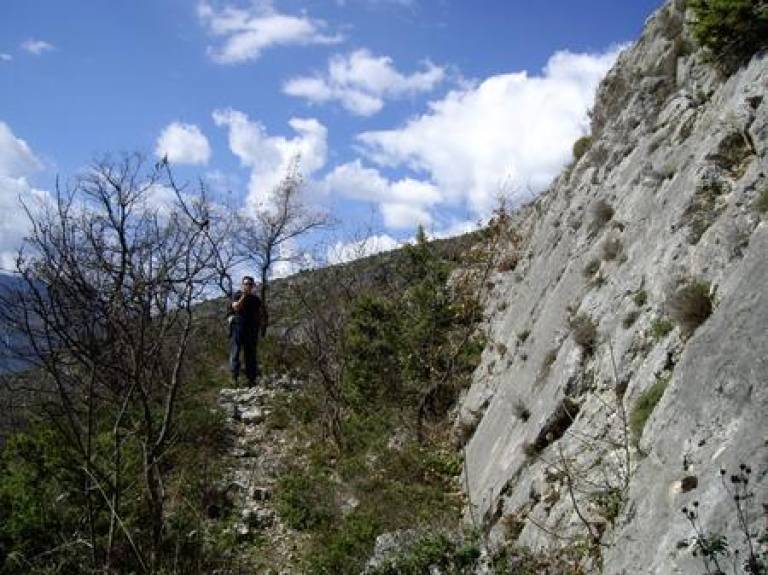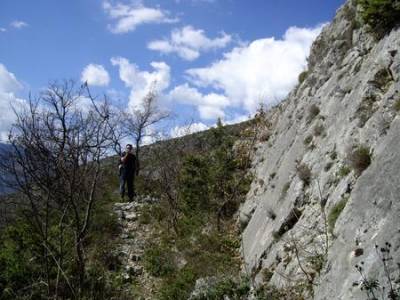Fault scarp
5 November 2013

Fault scarps are in effect fossilised earthquakes. When the ground on one side moves relative to the other side, a step is left in the bedrock. Over time, erosion can reveal these long (up to tens of kilometres) scars in the landscape. The photo above, taken in the Apennine mountains in central Italy, shows a fault scarp close up, with a handy human in the frame for scale.
New research by a team including UCL's Joanna Faure Walker and Birkbeck's Gerald Roberts (in the photo) has studied fault scarps in the Apennines. Because they are visible signs of movements in the rock over millions of years, fault scarps can be used to reconstruct the behaviour of a fault over much longer timescales than is possible by observing the faults over human timescales.
Photo credit: Joanna Faure Walker (UCL IRDR)
Links
High resolution images
This image can be reproduced freely providing the source is credited
 Close
Close





